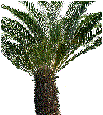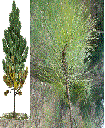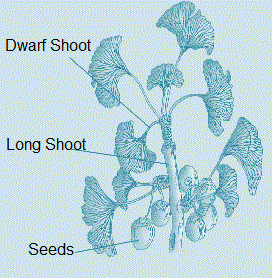Define the gymnosperm in plant kingdom
The gymnosperms are plants in which the ovules are not enclosed by any ovary wall and remain exposed, both before and after fertilisation. In the word gymnosperm, gymnos means naked and sperma means seeds.
The seeds which get develop post-fertilisation are not covered menas naked.
Gymnosperms include medium/tall trees and shrubs.
One of the example is giant redwood tree Sequoia the tallest species.
Roots
The roots are generally tap roots. Roots in some genera have fungal association in the form of mycorrhiza (Pinus), while in some others (Cycas) small specialised roots called coralloid roots are associated with N2-fixing cyanobacteria.
The stems are unbranched (Cycas) or branched (Pinus, Cedrus).
Leaves
The leaves may be simple or compound. In Cycas the pinnate leaves persist for a few years.
The leaves in gymnosperms are well-adapted to withstand extremes of temperature, humidity and wind.
In conifers, the needle-like leaves reduce the surface area. Their thick cuticle and sunken stomata also help to reduce water loss.
Spores
The gymnosperms are heterosporous, they produce haploid microspores and megaspores. The two kinds of spores are produced within sporangia that are borne on sporophylls which are arranged spirally along an axis to form lax or compact strobili or cones.
The strobili bearing microsporophylls and microsporangia are called microsporangiate or male strobili.
The microspores develop into a male gametophytic generation which is highly reduced and is confined to only a limited number of cells.
This reduced gametophyte is called a pollen grain. The development of pollen grains take place within the microsporangia.
Cone
The cones bearing megasporophylls with ovules or megasporangia are called macrosporangiate or female strobili. The male or female cones or strobili may be borne on the same tree (Pinus). However, in cycas male cones and megasporophylls are borne on different trees.
The megaspore mother cell is differentiated from one of the cells of the nucellus.
The nucellus is protected by envelopes and the composite structure is called an ovule.
The ovules are borne on megasporophylls which may be clustered to form the female cones.
The megaspore mother cell divides meiotically to form four megaspores.
One of the megaspores enclosed within the megasporangium develops into a multicellular female gametophyte that bears two or more archegonia or female sex organs.
The multicellular female gametophyte is also retained within megasporangium.
Unlike bryophytes and pteridophytes, in gymnosperms the male and the female gametophytes do not have an independent free-living existence.
They remain within the sporangia retained on the sporophytes.
The pollen grain is released from the microsporangium. They are carried in air currents and come in contact with the opening of the ovules borne on megasporophylls.
The pollen tube carrying the male gametes grows towards archegonia in the ovules and discharge their contents near the mouth of the archegonia. Following fertilisation, zygote develops into an embryo and the ovules into seeds.
These seeds are not covered.

(Cycas)

(Pinus)

(Ginkgo)
Difference between angiosperms and gymnosperms
| Angiosperms | Gymnosperms | |
|---|---|---|
| Seed | A seed is produced by flowering plants and is enclosed within an ovary | A seed is produced by non-flowering plants and are unenclosed or naked. |
| Lifecycle | The lifecycle of these plants are seasonal | These plants are evergreen |
| Tissue | Has triploid tissue | Has haploid tissue |
| Leaves | Leaves are flat in shape | Leaves are scalelike and needle-like in shape |
| Wood type | Hardwood type | Softwood type |
| Reproduction | Reproduction rely on animals | Reproduction rely on wind |
| Reproductive system | Reproductive system present in flowers (unisexual or bisexual) | Reproductive system present in cones and are unisexual |
Similarities between angiosperms and gymnosperms
| Angiosperm | Gymnosperm |
|---|---|
| The angiosperms have plant parts including the leaves, stems, and roots. | The plant parts of gymnosperms are also the same as the angiosperms which include the leaves, stems, and roots. |
| The term angiosperm comes from a Greek word angein meaning “casing” and Sperma meaning “seed”. | The term gymnosperm is derived from a Greek word gymnos meaning “naked" and Sperma meaning “seed”. |
| Angiosperms like all vascular plants have a sporophyte-dominant life cycle. | Gymnosperms also have a sporophyte-dominant life cycle as in other vascular plants. |
